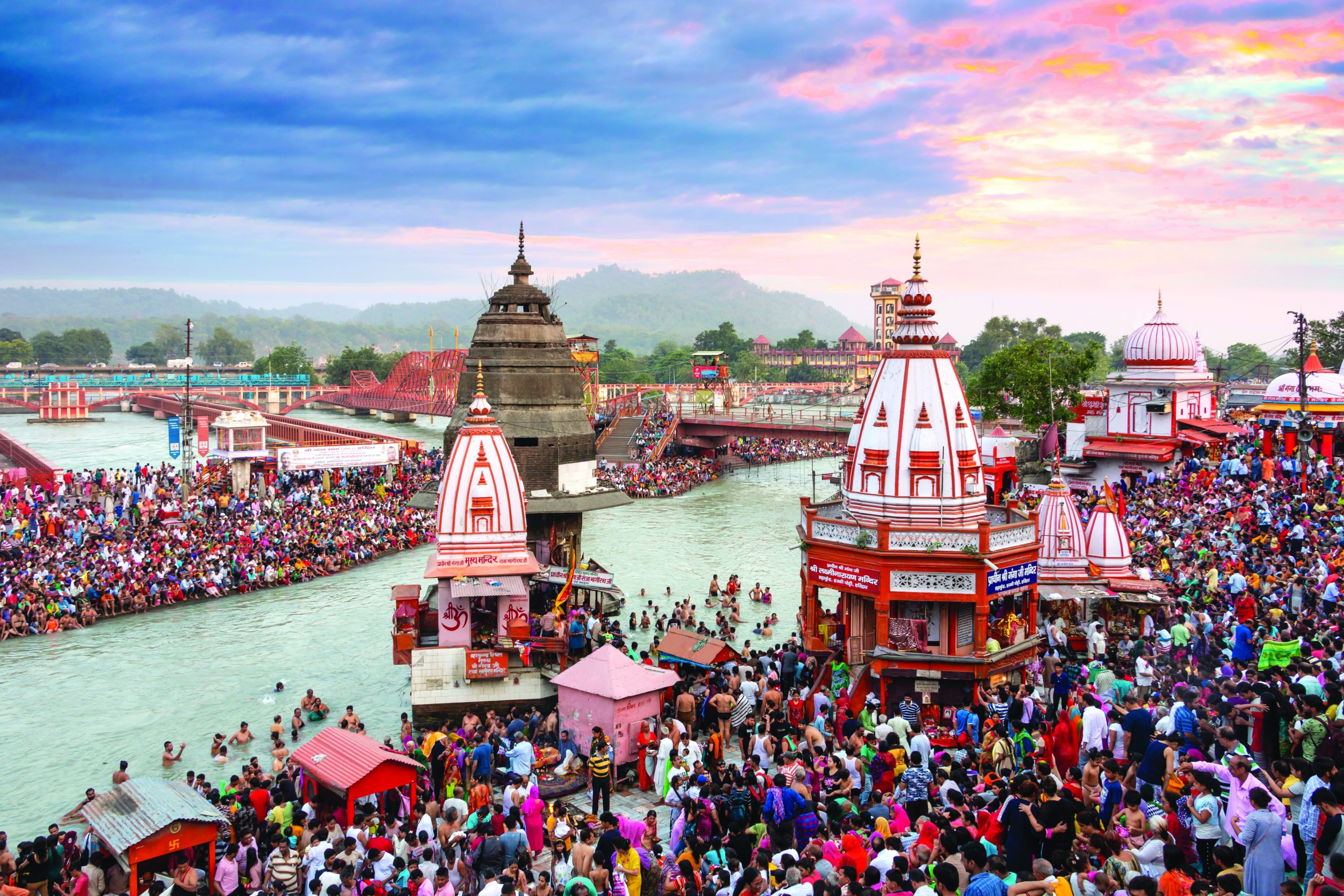
Down the ages, India, the land of sages and seers has been famous for its grand temples, well-designed mosques and faith-inspiring shrines. In a country where domestic tourism is largely faith driven, Religious and Pilgrimage (R&P) tourism is big business. From the snow-swathed Amarnath shrine in Kashmir, the cavernous Vaishno Devi temple in Jammu and the globally famous Tirumala Tirupati Temple in Andhra Pradesh to the remote monasteries in Ladakh, shrines, temples, mosques, monasteries and gurudwaras are the first tourism preference of India’s fast-expanding, 300-million strong middle class.
A 2022 NSSO survey says that India’s temple economy generates revenue estimated at Rs 3.02 lakh crore per year ($40 billion). Not a few pundits believe this is an under-estimate.
India has over 5 lakh temples, 7 lakh mosques and 35,000 churches according to Central government data. The annual revenue by way of donations, provision of board and lodging, religious services, sales of memorabilia etc of the Lord Venkateshwara temple in Tirupati, Andhra Pradesh which attracts over 14 million pilgrims per year, tops Rs.1,000 crore, a sum second only to The Vatican in terms of revenue generation.
Likewise, the Vaishno Devi shrine in Jammu reports an annual revenue of Rs.500 crore.
Following the recent liberalisation of the Indian economy which has significantly increased the purchasing power of India’s middle class, the R&P tourism business is growing by 30 percent per year. The salient features of India’s most popular R&P destinations are detailed below.
Char Dham
This is the collective name of four most revered Hindu pilgrimage destinations —Yamunotri, Gangotri, Kedarnath and Badrinath — sited in the Garhwal Himalayan region amidst snowcapped peaks. Temples have been built at the sources of four of India’s most sacred rivers — the Ganges at Gangotri, the Yamuna at Yamunotri, Mandakini at Kedarnath and Alaknanda at Badrinath. These four temples are open only during summer months (April-November), with the exact dates of opening announced by local priests. While Gangotri and Badrinath are accessible by road, visitors must trek between 12-17 km to reach the other two shrines. According to ancient Hindu puranas, a theerth yatra (complete tour) of the Char Dham shrines is an attainment which confers great religious merit upon those who complete the circuit.
Char Dham package tour. Garhwal Mandal Vikas Nigam (GMVN), the tourism department of the Uttaranchal state government conducts a ten-day Char Dham Yatra Package starting from various parts of the country. The package price of private tours inclusive of transport, food and accommodation varies between Rs. 50,000 to over Rs. 1 lakh. GMVN packages start from Rs. 20,000 for six days.
NB. Consumption of alcoholic beverages and non-vegetarian food is strictly prohibited in the Dhams.
Badrinath. Badrinath temple, abode of Lord Vishnu, is the pride of this temple town (pop. 3,000). Sited at a breathtaking altitude of 11,268 ft on the banks of the River Alaknanda and ensconced between the snowcapped Nar and Narayan peaks of the Himalayas, heaven is surely within reach here! Badrinath derives its name from the wild berries of Badri which grow profusely in this region. Adi Shankarcharya (509-477 BC) is believed to have built the temple and installed the idol of Lord Vishnu here. Contiguous to the temple and scattered around the region are several thermal springs — Tapta Kund, Narad Kund and Surya Kund — associated with remedial and religious significance.
While in Badrinath, take in the 5,000-year-old Vyas temple near Mana village (5 km) and the 522 ft Vasudhara Waterfall nearby.
Accommodation. High End: Hotel Vasudeva Inn (Rs. 9,400 per night), Amritara The Avadh (Rs.23,090), Camp Valley of Flowers (Rs.9,026); Mid-range: Hotel Charan Paduka (Rs.5,170), Bhumika Guest House (Rs.6,580), Firsthalt Xpress (Rs.4,242); Budget: Himsarovar Homestay (Rs. 3007), The Himalayan Abode (Rs.2,020), Bhajan Ashram (Rs.1,410). GMVN hostel beds are available as low as Rs. 659.
Kedarnath. The Kedarnath temple dedicated to Lord Shiva is a necessary once-in-a-lifetime pilgrimage for those in search of the divine and transcendental. Accessible via a testing 14 km uphill trek, it still attracts over 100,000 pilgrims annually. Perched at a sky-high altitude of 12,888 ft amidst snow-sheathed mountain peaks and swathes of green, this thousand-year-old shrine is built of heavy, gray stones slabs. The temple’s garbha griha (sanctum) enshrines a conical rock formation and mandapam (dolmen). As in all Shiva temples, a large statue of the Nandi Bull greets visitors at the entrance. Twenty-four types of ceremonial worship, priced between Rs.10-8,500 are offered here.
Accommodation. High end: La Fioli Resort (Rs.7,520 per night), Kedar Paradise Resorts (Rs.16,920), Shivay Kingdom Hotel (Rs.7,520); Mid-range and budget: Maharshtra Niketan Phata (Rs.6,580), New Mandakari River Resorts (Rs.4,513), Chauhans Homestay by Stayapart (Rs.5,427).
Gangotri. This is a small town sited at the source of India’s holiest (and perhaps most polluted) river: the Ganges. Situated at an elevation of 11,520 ft, the Gangotri temple is surrounded by lush stretches of deodars and pines. It was constructed by the Gorkha General Amar Singh Thapa and has been renovated several times. Every year over 5 million tourists and pilgrims from around the world visit here. Submerged in the river is a natural shivling, where, according to folklore, Shiva meditated when he received the celestial river Ganga into his matted locks. A day’s trek takes you to Gaumukh cave, the actual source of the Ganges.
Accommodation. There are several accommodation options including guesthouses, ashrams, dharamshalas and a sole GMVN tourist bungalow (Rs.448 for a bed in the dormitory and Rs.2,800 for a double room).
Yamunotri. In the western Garhwal Himalayas at a height of 11,646 ft, is Yamunotri, abode of the river goddess Yamuna. A towering black marble idol of the goddess dominates the shrine. The actual source of the Yamuna is the Yamunotri glacier (15,912 ft) higher up near the Kalindi peak. The Yamunotri temple was constructed by Maharaja Pratap Shah of Tehri Garhwal in —-.
Accommodation. There are several dharamshalas and ashrams providing rudimentary accommodation option, free of charge. Private accommodations include High end: Hotel Anil (Rs.7,520 per night), Hotel Kalindi (Rs.6,580), Hotel Atithi Nivas (Rs.6,520); Mid-range: Hotel Namami Gange (Rs.5,396), Stay Apart (Rs.3,877), Krishna Palace (Rs.5,039).
Hemkund Sahib
Nestling in an elysian valley of flowers is one of India’s most venerated gurudwaras — Gurudwara Hemkund Sahib. Constructed at an altitude of 15,552 ft, the shrine adjoins Hemkund Lake, and is accessible via a knees-testing 6 km trek across the Himalayan foothills. Ringed by seven snow-clad peaks and glaciers, the crystal clear waters of Hemkund reflect the gurudwara in an ethereal mirror image. The glaciers of Hathi Parvat and Sapt Rishi peaks feed the lake from which a small stream, the Himganga gushes forth. According to the Granth Sahib, Guru Gobind Singh, the tenth Guru of the Sikh faith, had meditated on the banks of this lake in an earlier incarnation. The gurudwara is an imposing star-shaped structure built on the edge of the lake, and attracts the devout of all faiths.
Accommodation. The lake area hosts numerous dharamshalas and ashrams which provide free lodging and food at nominal charges. Private hotels at a distance of within 20 km include The Tattva (Rs.6,720 per night), Blue Poppy (Rs.8,066), Royal Village (Rs.3,797), Hotel Uday Palace (Rs.2,688).
Haridwar
Propitiously sited at the point where the roaring Ganges emerges from the Himalayas 214 km north of Delhi, Haridwar which literally translates as ‘gateway to the abode of the gods’ is regarded as the most sacred of the several pilgrim towns along the banks of the 2,510 km Ganges which stretches for 2,510 km across the plains of North India.
In Hindu mythology, this town was referred to as Kapilsthan. Legend has it that the Suryavanshi Prince Bhagirath performed deep penance here to salvage the souls of his ancestors who had perished due to sage Kapila’s curse. His sacrifice caused the bountiful waters of the Ganga to revive the 60,000 sons of King Sagara. Also known as Mayapuri in the ancient puranas, it drew eulogies from the celebrated 7th century Chinese traveler, Hieun Tsang.
Moreover mythology relates that, drops of nectar or amrit churned out from a primordial ocean fell at four sites in Haridwar which became venues for the town’s tumultuous and colourful kumbh melas, held every 12 years. The kumbha and ardh kumbha (held every six years) represent the kaleidoscopic colours of spiritual India, as millions of devout Hindus take a ritual dip in the Ganges. The five sacred bathing spots in Haridwar — Gangadwar, Kankhal, Nila Parvat, Bilwa Theertha and Kusavarta — are choc-a-block with pilgrims during the melas.
One of the most important sites in Haridwar is Har-ki-Pauri or ‘footstep of God’, believed to mark the exact spot where the Ganges enters the plains. The footprint of Lord Vishnu imposed on an underwater stone, is a sacred point where devotees hold on to chains to prevent themselves from being swept away while entering the swirling waters of the river. The whole experience culminates in the Ganga Aarti or river worship performed every evening, as thousands of earthen lamps drift downstream, casting a blissful spell on the beholders. A trip by cable car (Rs.25 return) to the Manasa Devi temple located on a hill above the city, dedicated to Lord Shiva’s consort in her shakti avatar, is highly recommended.
Accommodation. Options vary from ashram guesthouses to international hotels, all of whom are higher priced during peak season (May to July) after which the rates drop by nearly 30-50 percent. Top-end: Regenta Okros Haridwar (Rs.5,414 per night), Hotel Sun City (Rs.9,594); Mid-range: Hotel Gopal (Rs.3,736), Hotel Ganga Bliss (Rs.4,092), Oyo 67731 (Rs.5,358); Budget: Hotel Gangori (Rs.1,546), UV’s Homestay Haridwar (Rs.2,135), Hotel Trishul (Rs.1,410).
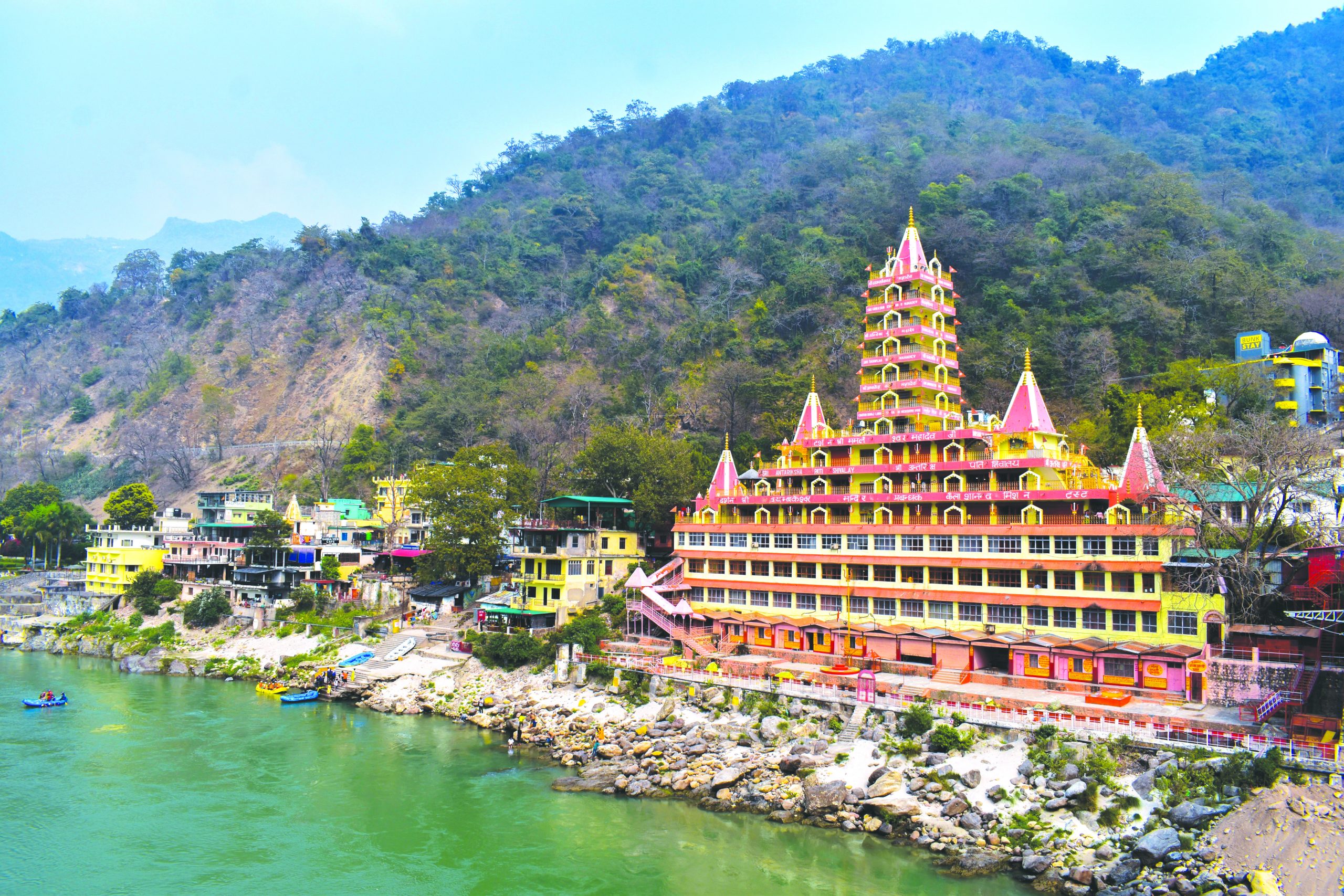 Rishikesh
Rishikesh
Surrounded by misty green hills on three sides, Rishikesh is located on the right bank of the Ganges, 35 km downstream from Haridwar, at the point where the Ganges confluences with the Chandrabhaga stream. Famously known as the yoga capital of the world, Rishikesh offers a varied pattern of misty slopes, the frothing Ganges, archetypal mystics and transcendental meditation centres under the tutelage of internationally acclaimed yoga masters.
The most famous landmarks of this temple town are the Laxman Jhoola suspension bridge; Muni-ki-Reti (sands of the sages), where as the name suggests, yogis meditate; and the expanding commercial township on the banks of the river. Laxman Jhoola is the spot where Laxman is said to have performed penance, for restoration of the kingdom of Ayodhya to his brother Lord Ram. The Laxman temple was built in his memory. Close to the bridge is the Neel Kanth Mahadev temple, conspicuous at a height of 5,500 ft.
Accommodation. Free residential accommodation is provided by several ashrams and dharamshalas. But these are bare halls of residence bereft of any mod cons. For the more fastidious other options are available. Among the better-known hotels are: Top-end: Yog Niketan by Sanskriti (Rs.8,752 per night), Neemrana’s Glasshouse on the Ganges (Rs.12,000), Justa Rasa Retreat and Spa (Rs.10,800), Mid-range: The Salvus Cottages (Rs.5,007), Pebbles Resort (Rs.4,621), Hotel Ishaan (Rs.5,880); Budget: Amraai (Rs.1,529), Shiv Shakti Hostel (Rs.1,001), Moustache Rishikesh Luxuria (Rs.2,264).
Vaishno Devi
The shrine of mata Vaishno Devi which draws over 7.5 million pilgrims annually is India’s second most visited temple. Sited at a height of 5,300 ft, it is located inside a cave within the Trikuta Bhagwati hills in Jammu and Kashmir. The cave temple is accessible only by foot from Katra (61 km from Jammu).
The 12.5 km scenic trek to the summit has several resting points and affords spectacular vistas of plains below. At the entrance of the temple, pilgrims must wade through a cold stream, the Charan Ganga, to reach the sanctum sanctorum.
Legend is that several millennia ago, Vaishno Devi, a devotee of Lord Vishnu had taken a vow of celibacy to win his favour. Bhairon Nath, a tantric sage was opposed to her resolution for his own purposes and pursued her into the Trikuta hills. At Banganga, where she experienced thirst, she shot an arrow into the earth, from where water gushed out. Charan Paduka, marked by imprints of her feet, is one of the sacred sites enroute to the summit. The goddess meditated in the cave at Adhkawari, halfway from Katra to the top of Trikuta. It took Bhairon nine months to locate her, which is why the cave is also known as Garbh Joon. When he finally found her and disturbed her penance, Vaishno Devi assumed the form of Maha Kali and cutting off Bhairon’s head, flung it atop the mountain. The Bhairon temple marks this spot, and a visit on the return journey is mandatory to complete the pilgrimage.
Accommodation. The most preferred resting point is Jammu (60 km). Jammu offers a wide range of hotels, guesthouses and inns, both private and government-owned. But in Katra itself, several Yatri Niwas hostels managed by the Sri Mata Vaishno Devi Shrine Board and numerous private hotels offer clean but rudimentary accommodation.
The Golden Temple
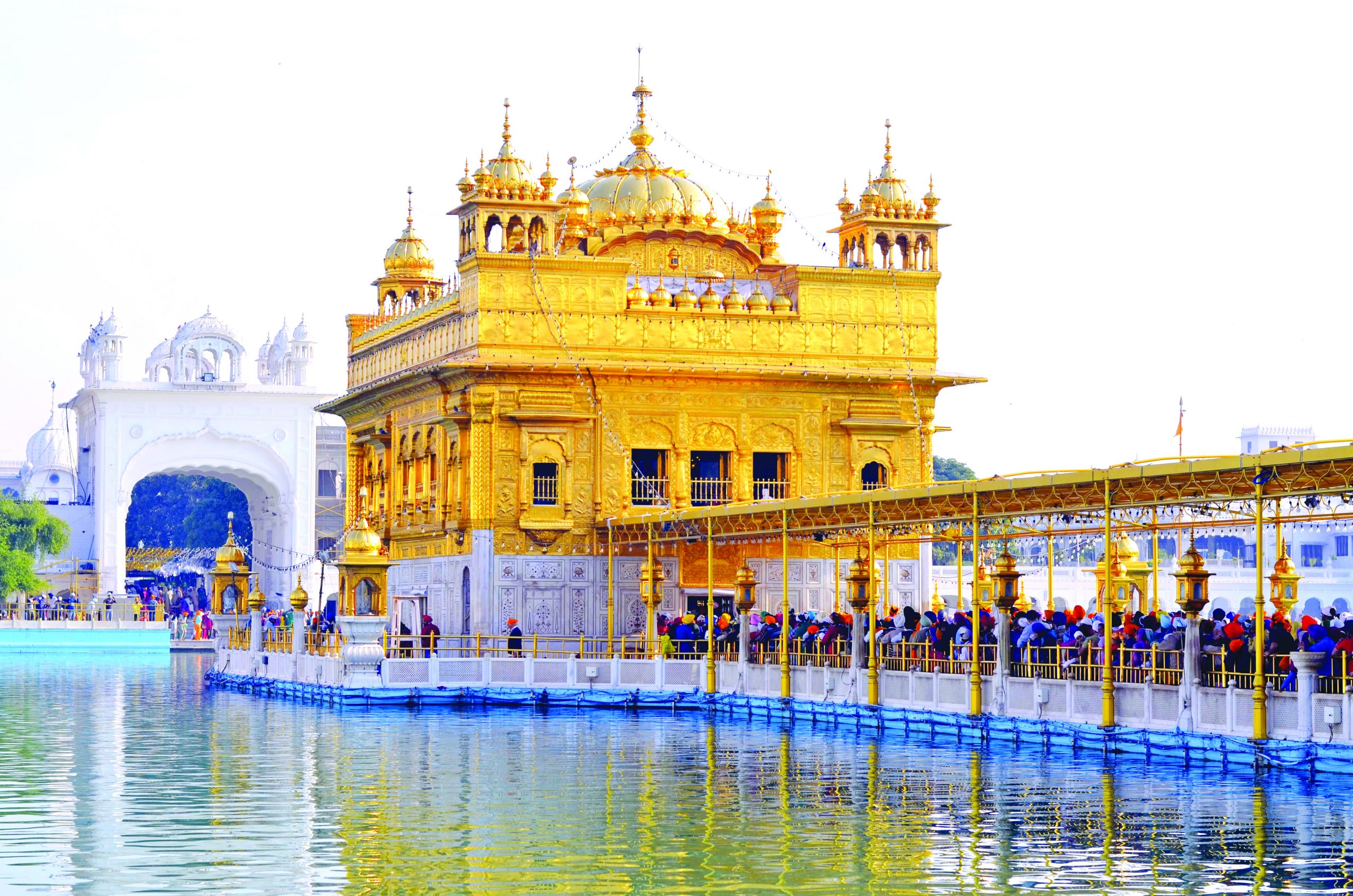 Some 300 km south of Vaishno Devi, the Golden Temple — holiest of holies for the 25 million strong Sikh community — appears at first glance, to be suspended on the beautiful Amrit Sarovar tank water body.
Some 300 km south of Vaishno Devi, the Golden Temple — holiest of holies for the 25 million strong Sikh community — appears at first glance, to be suspended on the beautiful Amrit Sarovar tank water body.
Guru Ramdas, the fourth Sikh guru, started constructing this gleaming architectural splendour in 1579 and it was completed a decade later by the sixth guru, Arjun Dev. The temple has four entrances, symbolic of the openness of Sikhism and its acceptance of adherents of all faiths. The walls within are decorated with carved wooden panels with elaborate silver and gold inlays. The Adi Granth, compiled by Guru Arjun Dev, rests on a throne beneath a jewelled canopy. Priests continuously recite verses from the Granth Sahib in three-hour shifts. A complete recitation takes 48 hours.
Accommodation. Most pilgrims reside in the free rooms of the Golden Temple complex. The city also offers more contemporary residential options for business and leisure travellers. Some accommodation options include HM Inn (Rs. 8,460 per night), Ramada Amritsar (Rs. 6,392), Hotel Abode (Rs. 3,478), Hotel Dua Grand (Rs. 1,376), Devista Hotel (Rs. 1,016).
Mathura
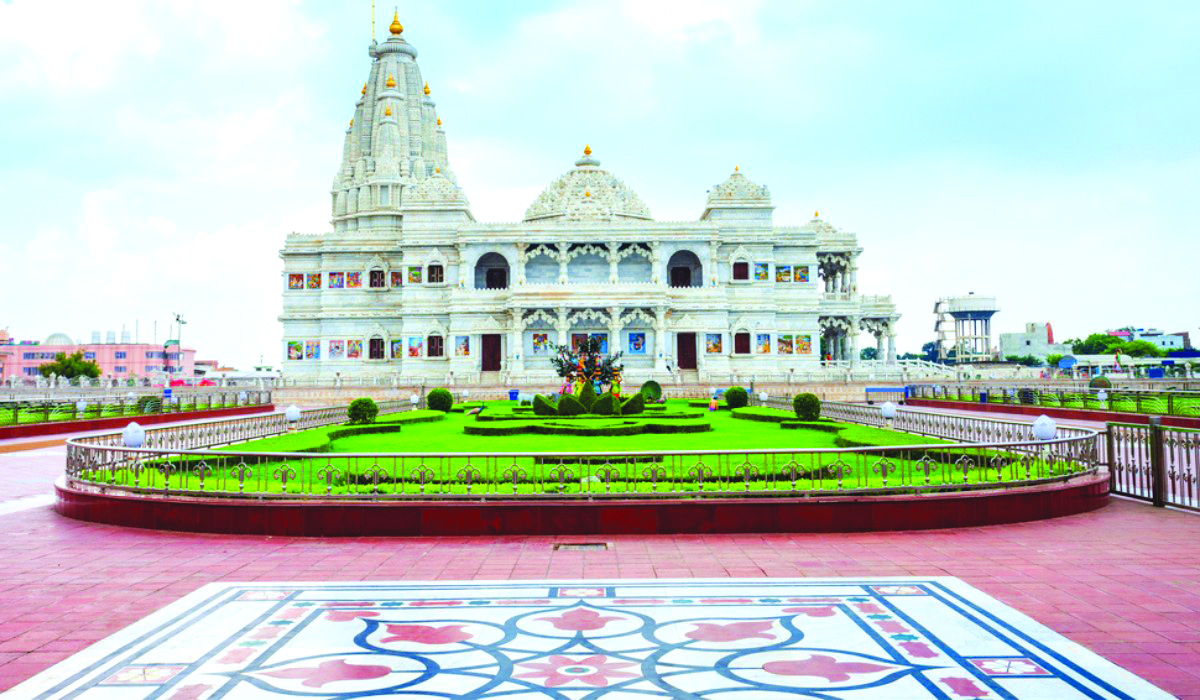 In the heart of India’s most populous state Uttar Pradesh (pop. 235 million), is the city of Mathura (pop. 481,000), sacrosanct as the birthplace of Lord Krishna — the most popular and complex of Lord Vishnu’s manifestations. The nucleus of Brajbhoomi aka ‘land of love’, Mathura is a mere 150 km from Delhi and 58 km from Agra. Brajbhoomi comprises two distinct units: the eastern part in the trans-Yamuna tract with places like Gokul, Mahavan, Baldeo, Mat and Bajna and the western side of the Yamuna covering the Mathura region that encompasses Vrindavan, Govardhan, Kusum Sarovar, Barsana and Nandgaon.
In the heart of India’s most populous state Uttar Pradesh (pop. 235 million), is the city of Mathura (pop. 481,000), sacrosanct as the birthplace of Lord Krishna — the most popular and complex of Lord Vishnu’s manifestations. The nucleus of Brajbhoomi aka ‘land of love’, Mathura is a mere 150 km from Delhi and 58 km from Agra. Brajbhoomi comprises two distinct units: the eastern part in the trans-Yamuna tract with places like Gokul, Mahavan, Baldeo, Mat and Bajna and the western side of the Yamuna covering the Mathura region that encompasses Vrindavan, Govardhan, Kusum Sarovar, Barsana and Nandgaon.
The epicentre of Mathura is the Sri Krishna Janambhoomi (birthplace), housed in a small bare room Kesava Deo Temple is replete with murals. Lord Krishna was reportedly born here 3,500 years ago. Surrounding the temple are gardens and shopping arcades where Krishna souvenirs are available aplenty.
A long stretch of picturesque ghats, with steps leading to the water’s edge, arched gateways and temple spires extending along the right bank of the River Yamuna, define the sacred character of Mathura.
Accommodation. Mathura offers a wide range of comfortable accommodation options including dharamshalas, guesthouses and hotels. Popular among them are: Top-end: Nidhivan Sarovar Portico (Rs.5,857 per night), Hotel Lalita Grand (Rs.4,653), Treebo Trend Anjali Mahal (Rs.4,922); Mid-range: Oyo 71057 (Rs.2,797), Hotel Sheetal Regency (Rs.2,228), Wingston a Treehouse Hotel (Rs.2,681); Budget: Prakash Farm (Rs.1,410), Hotel Radha Regent (Rs.1,316), Subhadra Guest House (Rs.846).
Tirupati
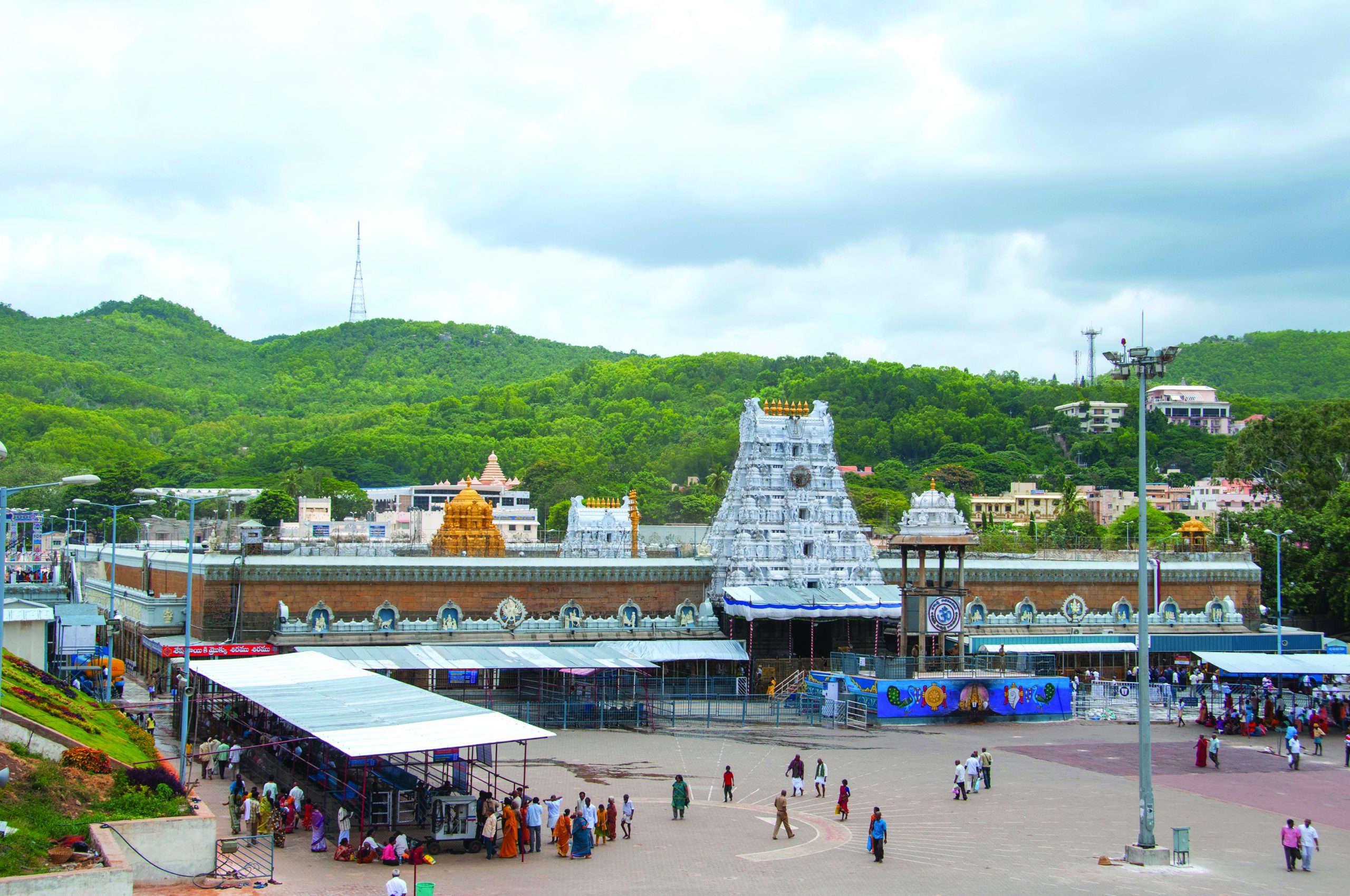 Way down south in the state of Andhra Pradesh (pop. 94 million) in the renewed temple town of Tirupati (pop.395,000) is the Sri Venkateswara Temple, is comparable with The Vatican as the most visited pilgrimage sites worldwide. At any point of time there are over 5,000 pilgrims within the temple complex and during peak season (October-December) the number could rise to 100,000.
Way down south in the state of Andhra Pradesh (pop. 94 million) in the renewed temple town of Tirupati (pop.395,000) is the Sri Venkateswara Temple, is comparable with The Vatican as the most visited pilgrimage sites worldwide. At any point of time there are over 5,000 pilgrims within the temple complex and during peak season (October-December) the number could rise to 100,000.
Sited on Venkatachala, seventh peak of the Tirumala range on the southern banks of Sri Swami Pushkarini, the Venkateswara temple has acquired a unique sanctity in Indian religious lore.
The shastras, puranas and alwar hymns unequivocally declare that in the Kali Yuga, one can attain mukti (deliverance), only through the grace of Venkata Nayaka or Sri Venkateswara. The blessings earned by completing a pilgrimage to the temple are listed in the Rig Veda and Asthadasa Puranas. In these epics, Sri Venkateswara is described as the divine benefactor and bestower of boons.
One of the unique rituals performed by pilgrims here is the tonsuring and offering of hair to the deity, in a symbolic act of ego renunciation. The temple and hill is administered by the 18,000-strong staff of the Tirumala Tirupati Devasthanam, reportedly the wealthiest charitable trust in India.
Accommodation. Most travelers to Tirupati stay in free guesthouses at Sri Venkateshwara Dharamsala, Venkateshwar Guest House, Padmavati Guest House and Sri Kodankarma Dharamsala. Those who prefer more upscale accommodation can reside at the base of the hill.
The more popular options are: Top-end: Fortune Select Grand Ridge- ITC Hotel Group (Rs.6,500 per night), Manasa Sarovara Premier (Rs.5,711), Hotel mount View Comforts (Rs.4,033); Mid-range/budget: Sannidhi Service Apartments (Rs.2,057), Nayath Service Apartments (Rs.2,970), Springs Hotel (Rs.2,605), KVP Inn (Rs.840), Hotel Sahasra Residency (Rs.749).























